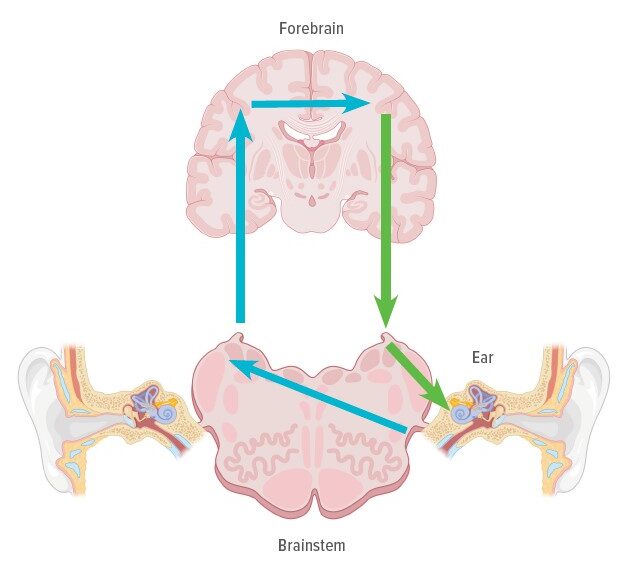Sound Input May be Modified by Cerebral Cortex and Brainstem Processes
Research By: Lisa Hunter, PhD | David R. Moore, PhD
Post Date: March 1, 2023 | Publish Date: Mar. 1, 2023
Research in Patient Services | Top Scientific Achievement


Listening and information processing is a complex function, which includes hearing an auditory signal, paying attention to the relevant sounds and filtering out background noise. Children who have listening difficulties (LiD) despite having normal hearing tests are often diagnosed with an auditory processing disorder (APD), a condition that often co-exists with developmental language disorder and attention-deficit/hyperactivity disorder.
However, APD and the involvement of specific auditory mechanisms are not well understood, limiting the development of effective treatments. Now, a study of 132 children with and without LiD—led by Lisa Hunter, PhD, David Moore, PhD, and colleagues—provides new insight into the transmission and perception of sound along the auditory pathway.
“In children with listening difficulties, we found a surprising correlation between speech perception and neural function of the ear,” says Hunter, scientific director for Audiology in the Communication Sciences Research Center. “This novel result suggests that listening difficulties modify input to the ear through processes originating in the cerebral cortex and brainstem.”
Researchers observed no inner ear pathology in children with LiD. However, there was evidence for brainstem differences in the LiD group, which was interpreted as increased central gain, with shorter auditory brainstem and midbrain response latencies, and increased middle ear muscle reflex (MEMR) strength. The findings suggest that children with LiD have faster brainstem processing and larger MEMR reflexes than their typically developing peers, possibly influenced by top-down forebrain activity. These differences were related to parental reports of poorer listening ability and perception of spoken sentences in competing speech.
Future research will focus on comparing functional MRI brain images of these children during active speech and passive resting states. The investigators plan to evaluate the functional connectivity of the frontal regions, primary auditory cortex and auditory thalamus.
View more discoveries from 50 research divisions and areas
Return to the 2023 Research Annual Report main features
| Original title: | Brainstem auditory physiology in children with listening difficulties |
| Published in: | Hearing Research |
| Publish date: | Mar. 1, 2023 |
Research By








